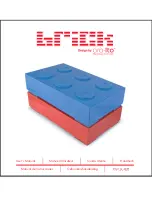
31
Make sure you are aware of the enclosure locations of each plug-in module and
interface connector.
Cables must be handled with care and must not be bent. To prevent emission
interference within a rack system and accidental cable disconnection, the routing
paths must be carefully planned.
Installation Procedures Overview
Following all the instructions provided below can minimize system installation time.
Detailed, illustrated instructions for each component are given in the following
sections.
1. Unpack:
Unpack the system and confirm all components have been received
against the Unpacking List.
2. Rack/Cabinet installation:
If the system is going to be installed in a rack or
cabinet, it should be installed prior to installing the hard drives. Installing the
system into a rack or cabinet requires at least two people due to its weight. If you
need to install the slide rails that came with the system, please go
3. Install CBM (if necessary)
: Install the CBM (Battery Backup Unit + Flash
Backup Module) onto the controller if you purchased it as an additional item.
4. Install hard drives:
Separately purchased SAS/SATA hard drives must be
individually installed into the drive trays.
5. Install drive trays:
After the hard drives have been installed into the drive trays,
you can install the drive trays into the enclosure (install trays
AFTER
the
enclosure has been mounted onto the rack).
6. Cable connection:
Use the supplied power cords to connect the system to main
power. It is recommended to connect power cords to separate and independent
power sources (different circuit breakers for redundancy).
7. Power up:
Once the components have been properly installed and all cables are
properly connected, you can power up the system and configure the RAID array.
















































